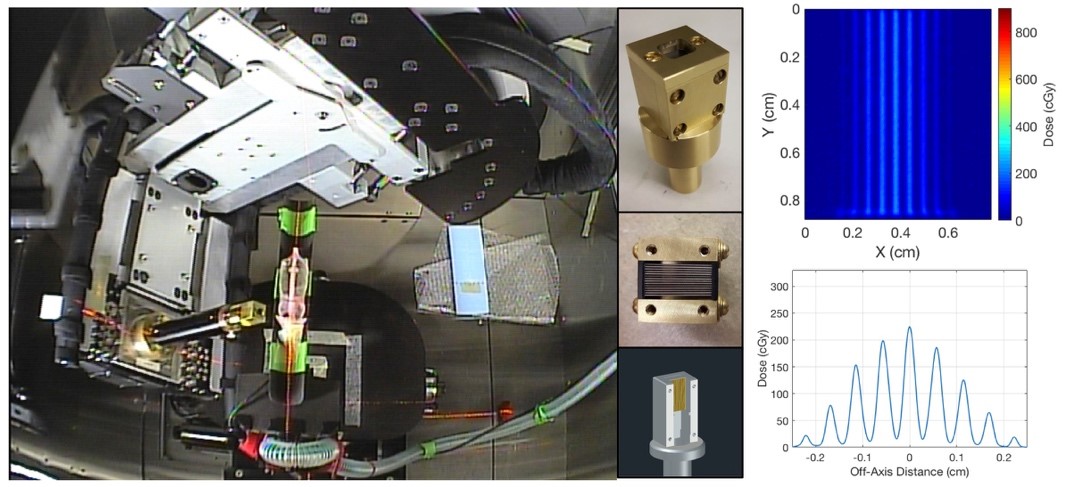FLASH and spatially fractionated radiotherapy
FLASH radiotherapy
FLASH shown great promise in the decrease of side-effects while maintaining the potential to kill tumor cells. We demonstrated that conventional x-ray tubes are capable of FLASH dose delivery and published on this as a Medical Physics Letter. We have built a custom beam shutter to allow for as short as 10 ms irradiations and are we are using this system to evaluate scintillator dosimeters for ultrahigh dose-rate dosimetry.

We are also working on building a FLASH irradiation station at the ARIEL beamline at TRIUMF, a high-energy physics laboratory in Vancouver. By means of heat transport simulations, we have designed an electron-to-photon converter for the delivery of an ultrahigh dose-rate 10 MV beam on the existing medium energy beam dump. Our beam modeling suggests that the achieved dose rates at the irradiation site should be up to 200 Gy/s and above the preliminary FLASH effect dose rate threshold of 40 Gy/s to depths of 10 cm. We will be installing the FLASH/SFRT infrastructure in March 2021 and will be running first MV-photon beam ultrahigh dose-rate small animal experiments in the summer of 2021.

People
Magdalena Bazalova-Carter
Spatially fractionated radiotherapy (SFRT)
Like FLASH, spatially-fractionated radiotherapy (SFRT) has shown promise in the reduction of radiotherapy side effects. SFRT has been implemented in the form of microbeams, minibeams of grid therapy, mainly on synchrotron sources with limited access. We are investigating the feasibility to deliver SFRT on the SARRP system. We have built a custom collimator that can be inserted into the SARRP 10x10 mm nozzle and results in peak-to-valley dose ratios (PVDRs) of ~13 and isocenter dose rates of ~ 1.2 Gy/min. We have also tested two other 3D-printed tungsten miniGRID and microGRID collimators for SFRT dose delivery on the SARRP. The microGRID collimator with 400 μm slit size and 287.5 μm center-to-center distance resulted in high PVDR values of 58.

Additionally, thanks to Monte Carlo simulations with the TOPAS code, we have designed a GRID collimator for the delivery of SFRT on the TRIUMF beamline with 10 MV photons that is resulting in PVDR of ~5.
People
Magdalena Bazalova-Carter
